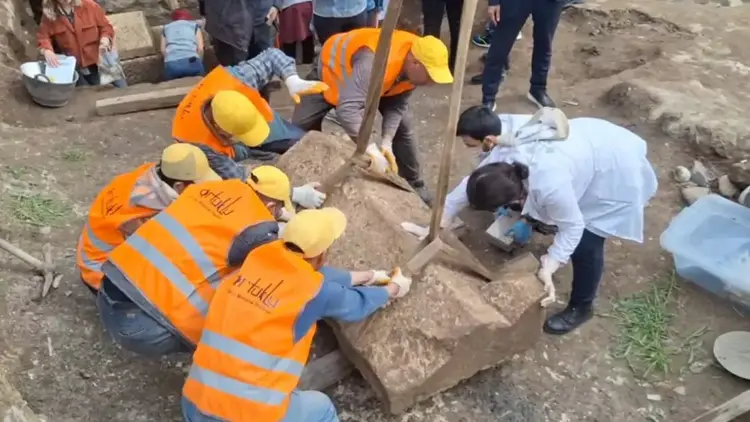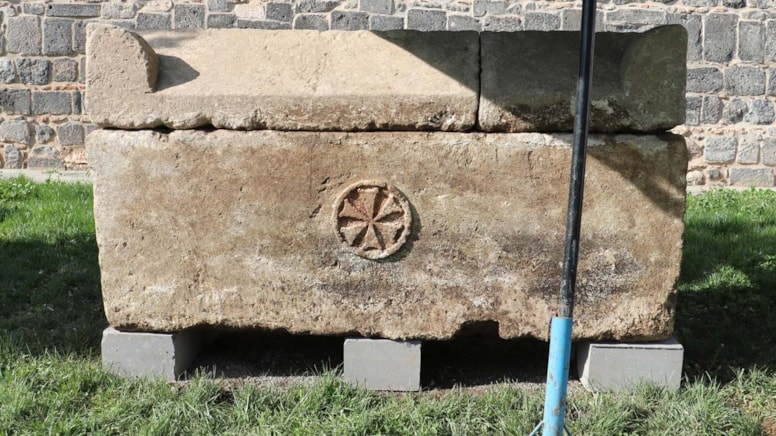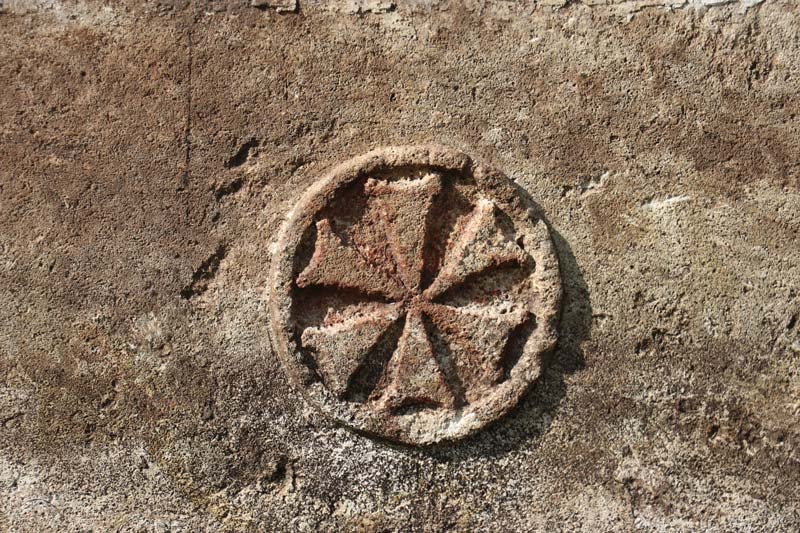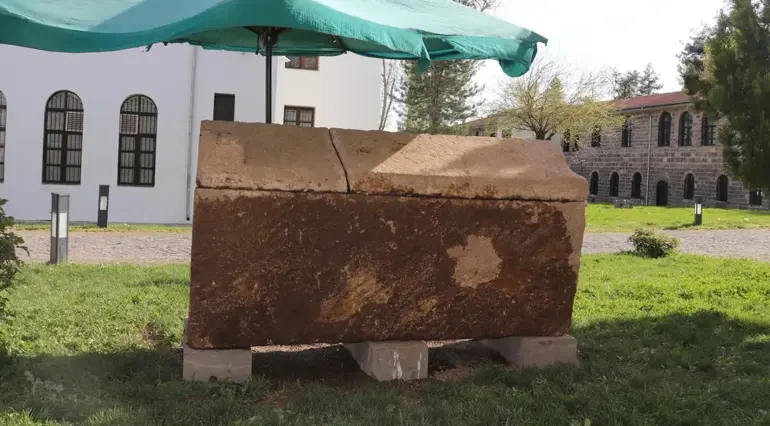
Roman sarcophagus found for the first time in Diyarbakır
A sarcophagus thought to be from the Roman period was found during the restoration works of the damaged points of the 5,000-year-old Diyarbakır city walls, a UNESCO World Cultural Heritage Site.
The sarcophagus found in Diyarbakır attracted attention because it was found for the first time.

While the restoration work on the 4th stage of the Diyarbakır city walls in Sur district of Diyarbakır continued on the bastion numbered 75, the teams came across hard ground.
Investigating the area, the teams detected a Roman ‘sarcophagus’ between the bastion number 75 and Saint George Church, the first of its kind in the city.
📣 Our WhatsApp channel is now LIVE! Stay up-to-date with the latest news and updates, just click here to follow us on WhatsApp and never miss a thing!!
The sarcophagus is 24 centimeters long, 82 centimeters high and has 2 lids.

The examination of the hull of the sarcophagus revealed that it was made of monolithic limestone.
A ‘Maltese Cross‘ was detected in a circle in the center of the body.
Cemil Koç, Director of Diyarbakır Survey and Monuments, said the area where the sarcophagus was found is most likely the cemetery area of the church. Excavations continue. It is possible that similar data may emerge. As a result of the archaeological excavations, a sarcophagus was found in Diyarbakır for the first time.”
Stating that the sarcophagus is currently temporarily exhibited in front of the old prison building in İçkale, Koç noted that they plan to exhibit the sarcophagus on the side of the Saint George Church after the landscaping they will do.

Diyarbakır Restoration and Conservation Regional Laboratory teams continue to work on the sarcophagus, which is now on display in the museum garden.
Cover Photo: DHA
You may also like
- A 1700-year-old statue of Pan unearthed during the excavations at Polyeuktos in İstanbul
- The granary was found in the ancient city of Sebaste, founded by the first Roman emperor Augustus
- Donalar Kale Kapı Rock Tomb or Donalar Rock Tomb
- Theater emerges as works continue in ancient city of Perinthos
- Urartian King Argishti’s bronze shield revealed the name of an unknown country
- The religious center of Lycia, the ancient city of Letoon
- Who were the Luwians?
- A new study brings a fresh perspective on the Anatolian origin of the Indo-European languages
- Perhaps the oldest thermal treatment center in the world, which has been in continuous use for 2000 years -Basilica Therma Roman Bath or King’s Daughter-
- The largest synagogue of the ancient world, located in the ancient city of Sardis, is being restored











Leave a Reply